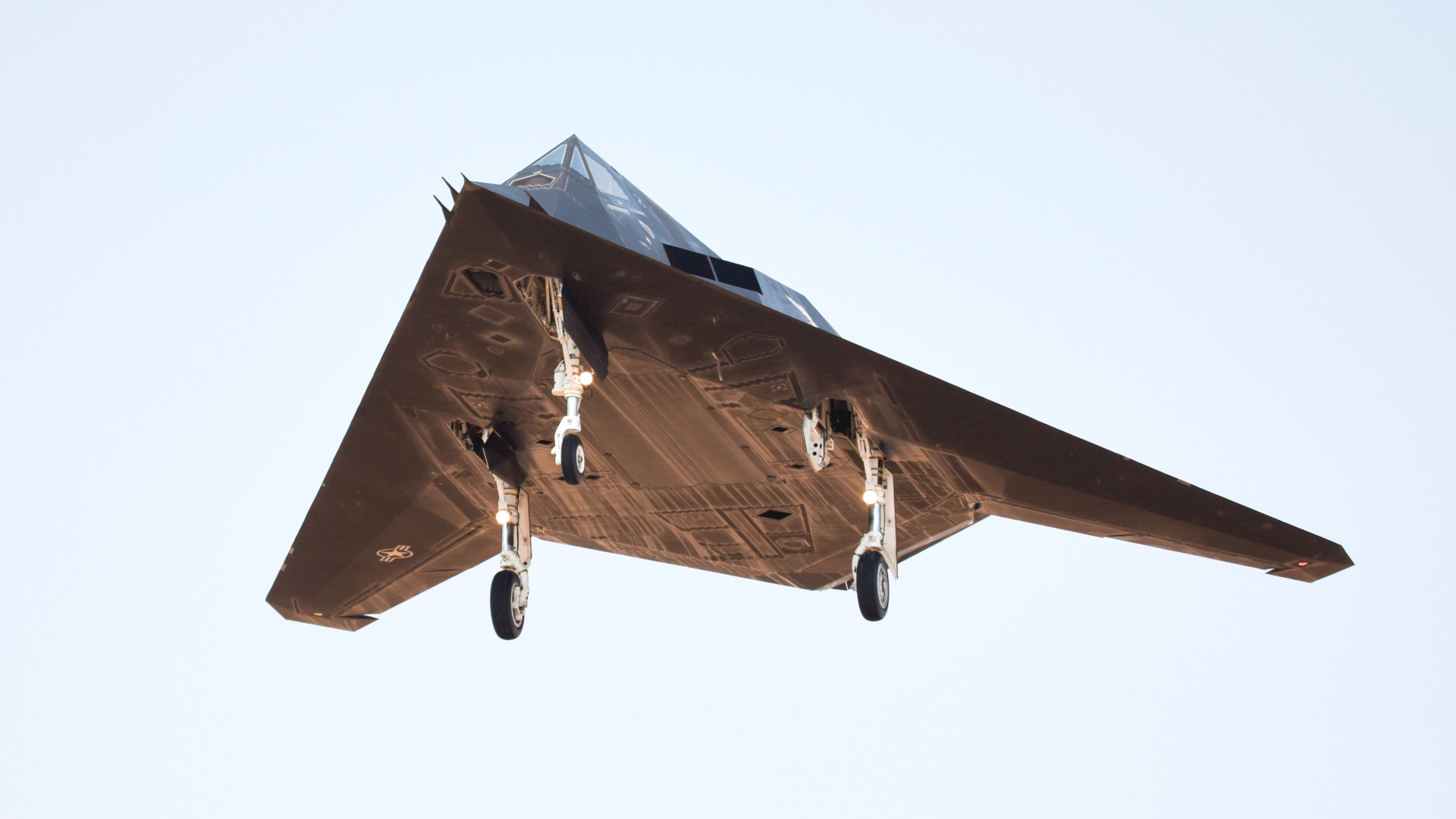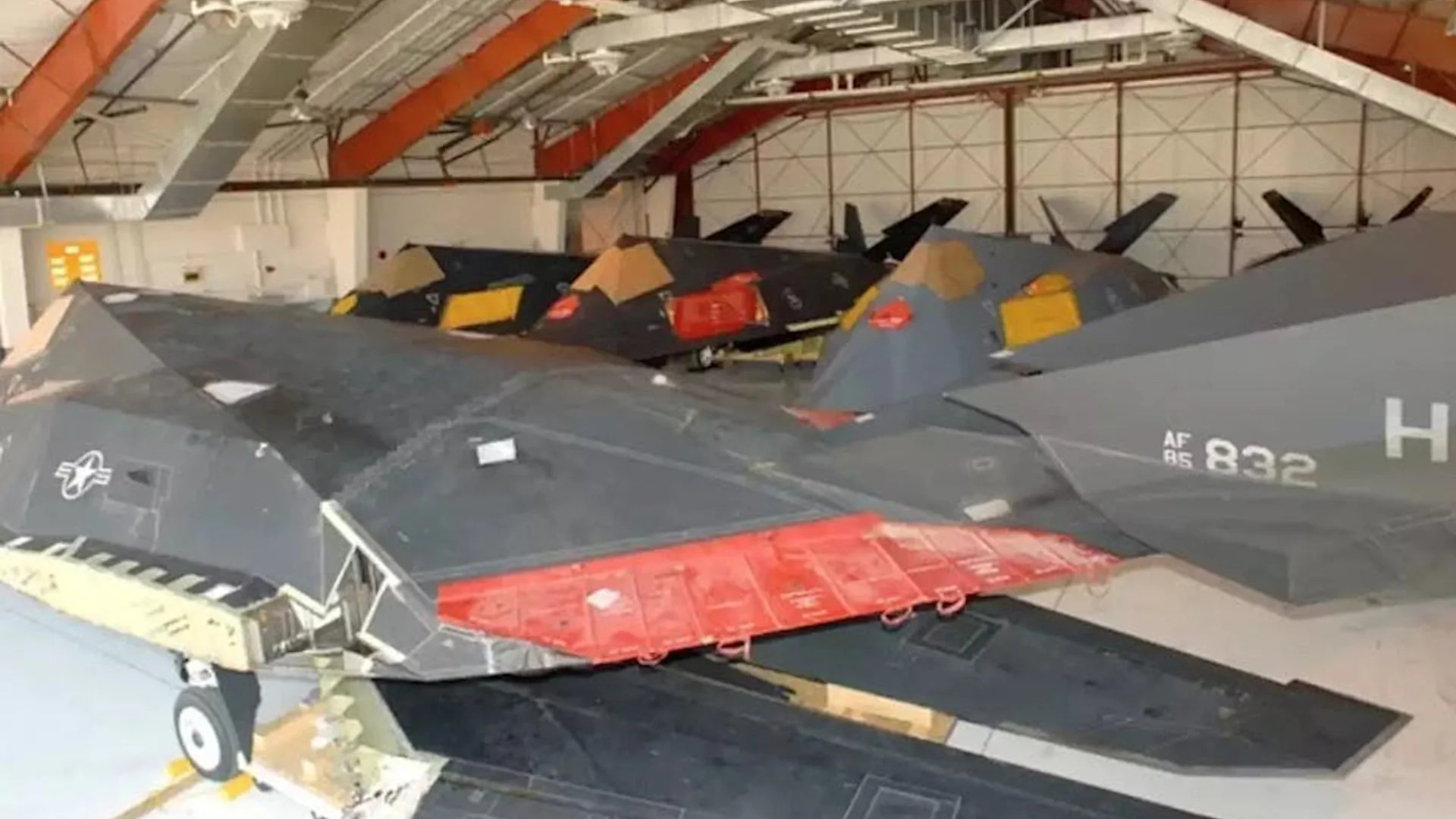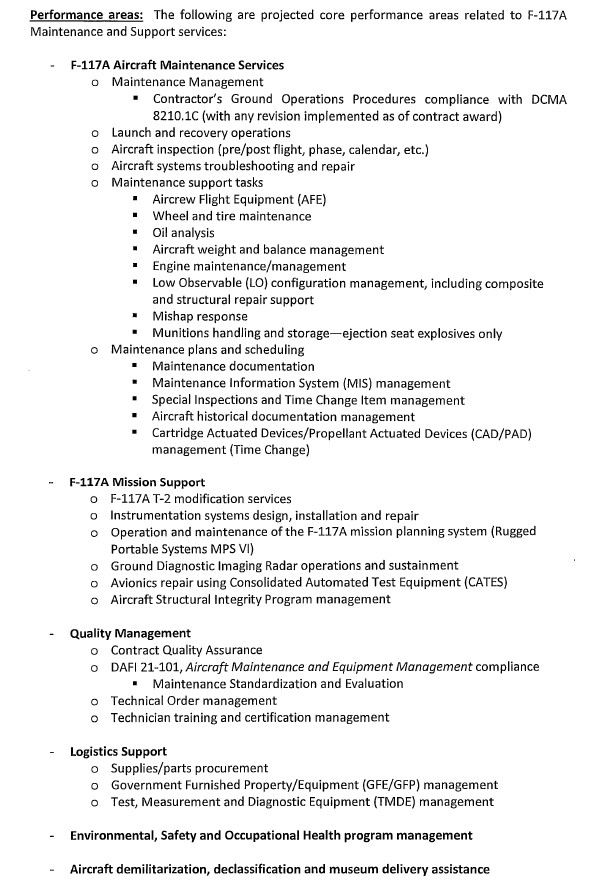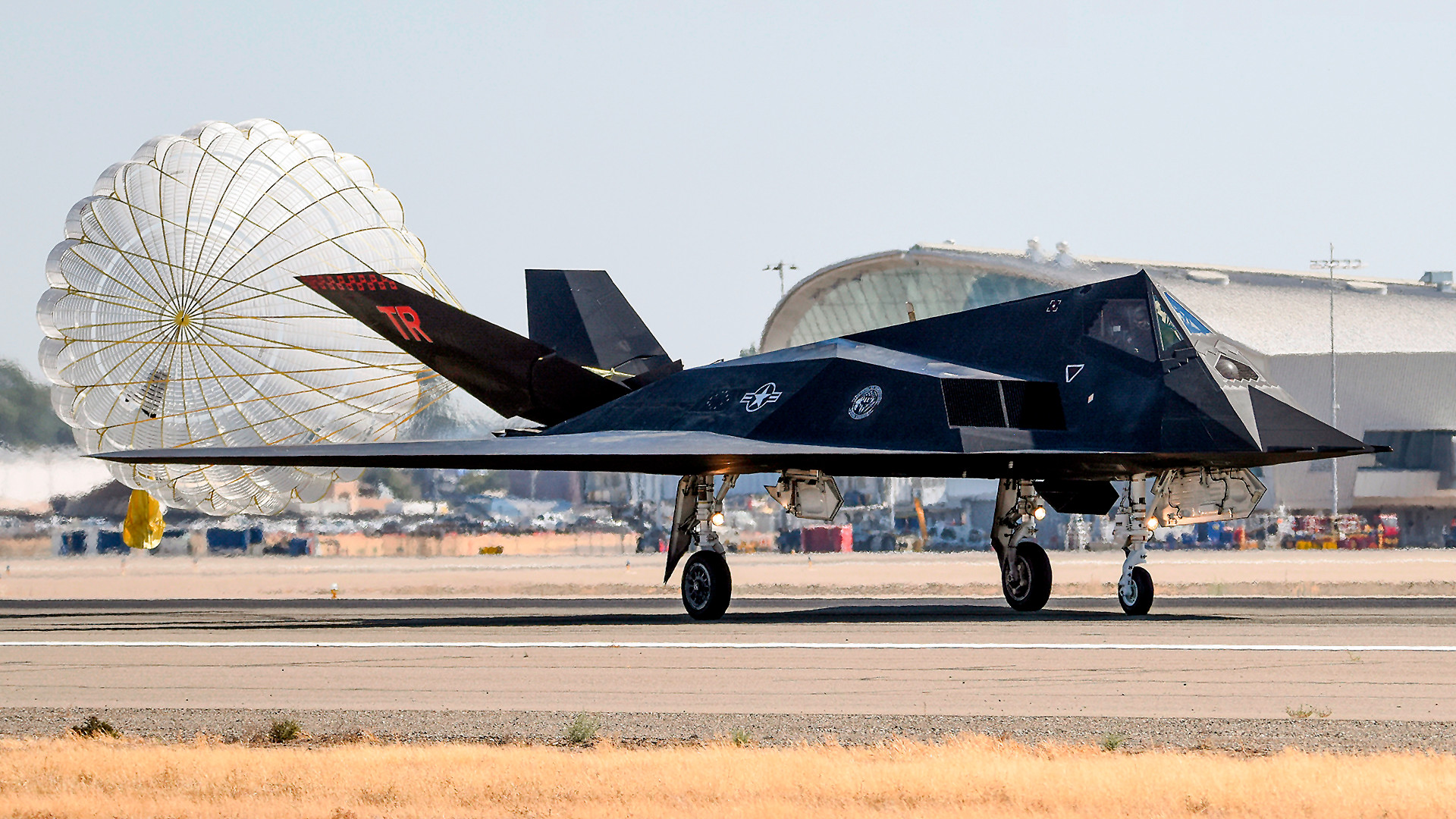Nearly 14 years after officially ‘retiring’ its F-117A Nighthawk stealth combat jets, the Air Force may now be looking to keep them flying through at least 2034. A portion of the remaining F-117A fleet, flown by Air Force test pilots, has been very actively used for research and development, test and evaluation, and training purposes in recent years. This has included using the jets as ‘red air’ aggressors and as surrogates for stealthy cruise missiles during large-scale exercises.
The U.S. Air Force has now confirmed that it currently plans to continue flying operations with at least a portion of the F-117A fleet through 2034. A full update with additional information can be found at the bottom of this story.
The Air Force Test Center (AFTC), headquartered at Edwards Air Force Base in California, put out a request for information (RFI) regarding a possible future contract for F-117A maintenance and logistics support services in September 2022. Interested contractors were invited to submit proposals for meeting AFTC’s project requirements by October 3 of that year, with that deadline being ahead of a planned industry day meeting later that month.

The RFI’s main stated goal was to “determine potential suppliers with experience and capabilities to support a 10-year F-117A Maintenance and Logistics Support Services contract at the Tonopah Test Range (TTR),” according to an unclassified contracting document AFTC released online. The notice added that the prospective start date for this work would be January 1, 2024.
All of the Nighthawks the Air Force still has in inventory, flyable or not, are currently located at the Tonopah Test Range Airport, which is situated inside the boundaries of the larger Nevada Test and Training Range (NTTR) that lies adjacent to Nellis Air Force Base.

Work under the potential contract might include “maintenance and logistics support for F-117A limited flying operations at the Tonopah Test Range (TTR) airfield” and “the preservation of the F-117A aircraft fleet in an extended storage condition,” according to the RFI from last year. A breakdown of more specific potential tasks says that contractors could be called upon to support launch and recovery operations, Temporary 2 (T-2) modification services, and operation and maintenance of the current F-117A mission planning system, among other things.
T-2 modifications encompass “configuration changes that support research and development; design changes to existing T-2 modifications; and Developmental Test and Evaluation programs or in-service testing of systems or equipment,” according to a publicly available Air Force Materiel Command manual.
The aging Nighthawks, only 59 of which were built between 1982 and 1990, also require specialized maintenance attention, especially in regard to their still highly classified low-observable exterior coatings. The RFI mentions “munitions handling and storage” responsibilities as part of the possible contract, but says this is related to “ejection seat explosives only.”
In addition, contractors could find themselves supporting the continued “demilitarization/declassification of F-117A aircraft determined to be excess to Department of Defense requirements.” In 2017, Congress gave the Air Force permission to begin disposing of the Nighthawks at a rate of up to four airframes per year, including through scrapping or transfer for museums. The September 2022 RFI says that the expected maximum rate of divestment of F-117As is now only between two and three jets annually.

The exact status of the Air Force’s current remaining F-117A inventory, including how many are still flying, is unclear. As of 2019, the service said it still had 51 jets in its possession and then said the following year that at least 12 had been specifically set aside to go to various museums. Before they can be displayed to the general public, Nighthawks must first go through a specialized modification process to eliminate a host of sensitive features that you can read about here.
It is also not clear how much the September 2022 RFI still reflects current Air Force plans for the F-117A’s future. The War Zone reached out to the Air Force Life Cycle Management Center (AFLCMC), which oversees the sustainment of the service’s active aircraft and other weapon system inventories, for more information, but was directed to contact AFTC directly. The War Zone has reached out to the Air Force’s top headquarters at the Pentagon, which has been able to provide information about the Nighthawk fleet in the past, as well.
What is clear from the RFI is that the Air Force has at least been exploring the possibility of keeping at least a portion of the Nighthawk fleet flying for another decade or so. Even if all the jets end up disposed of for good by 2034, this will have meant the jets continued to provide valuable support of various kinds for more than a quarter century after they were officially removed from service.

We already know that the still-flying F-117As have been employed as stealthy aggressors and stand-ins for subsonic stealthy cruise missiles for various testing and training purposes. Despite their age, they still offer important benefits when used in these roles given that their radar, infrared, and other signature profiles are likely to be extremely dissimilar to what pilots and air defense system operators are used to encountering in these contexts.
Potential adversaries, especially possible near-peer opponents like China and Russia, have developed and fielded stealthy and otherwise advanced crewed and uncrewed aircraft, and continue to do so, the need for more stealth stealthy aggressors has only grown.
The F-117A’s unique attributes present similar utility for various kinds of testing. The Nighthawk’s stealthy signature is known intimately by the USAF. It can be used as a control variable for testing all types of new coatings and other low-observable technologies as well as sensors used to spot low-observable aircraft.
We know that the U.S. Air Force’s demand for low-observable test platforms has only increased in recent years as a result of the service’s Next Generation Air Dominance (NGAD) program. NGAD is a broad, multi-faceted future air combat initiative that includes work on a sixth-generation crewed combat aircraft, various tiers of uncrewed aircraft with high degrees of autonomy, new and advanced sensors, networking and battle management suites, weapon systems, next-generation jet engines, and more, as you can read more about here. The U.S. Navy has its own NGAD effort, which likely has similar needs for stealthy aircraft to support testing.
Though it remains to be seen exactly what the Air Force’s plans are for the F-117A fleet going forward, last year’s RFI certainly indicates that the Nighthawks could continue to have a very active ‘retirement’ for many years to come.
Updated 9:25 P.M. EST:
In response to queries from The War Zone, Air Force spokesperson Ann Stefanek has confirmed that the service is currently planning on operating at least some number of F-117A Nighthawk stealth combat jets through 2034. She further confirmed that, “on occasion, we fly certain [F-117A] aircraft to support limited research and training activities” and that there is currently no requirement to preserve any of these aircraft in any state for potential combat use.
In her statement, Stefanek also said the Air Force expects to eventually get rid of the entire F-117A fleet one way or another, but that she did not have exact details on a specific timeline for those divestments.
“We have approximately 45 F-117s currently. As we demilitarize the aircraft, they will be made available to museums, if requested, or be disposed of (scrapped),” she said. “Over 10 have already been approved for transfer to museums.”
Contact the author: joe@thedrive.com
